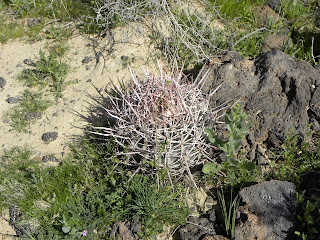Wind Project To Be Crammed In Amidst Wilderness and Wildlife

Sweden-based company Eolus is reviving plans to build the Crescent Peak Wind project in southern Nevada on wildlands prized for wildlife and primitive recreation. Basin & Range Watch learned that the company filed initial paperwork with the Bureau of Land Management (BLM) to begin environmental review of the project. This photo was taken along the northeastern boundary of the Wee Thump Joshua Tree Wilderness Area. The Crescent Peak area is in the distance on the right, and would be covered in giant wind turbines if Eolus gets its way. Solitude or Industrial Zone? Eolus is targeting a patchwork of unprotected lands in the Piute Valley that the BLM acknowledges are ideal for primitive recreation, and surrounded by conservation and wilderness designations. The Piute Valley offers a “range of outdoor recreation activities associated with a wide-open landscape with limited developments,” according to the BLM's own draft resource management plan. The Piute Valley is roug...


.jpg)











